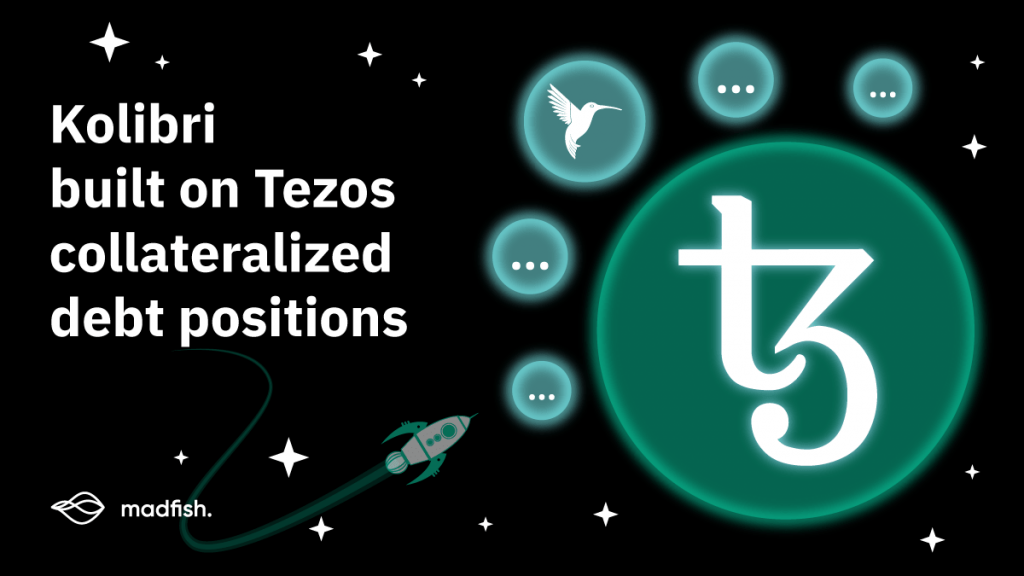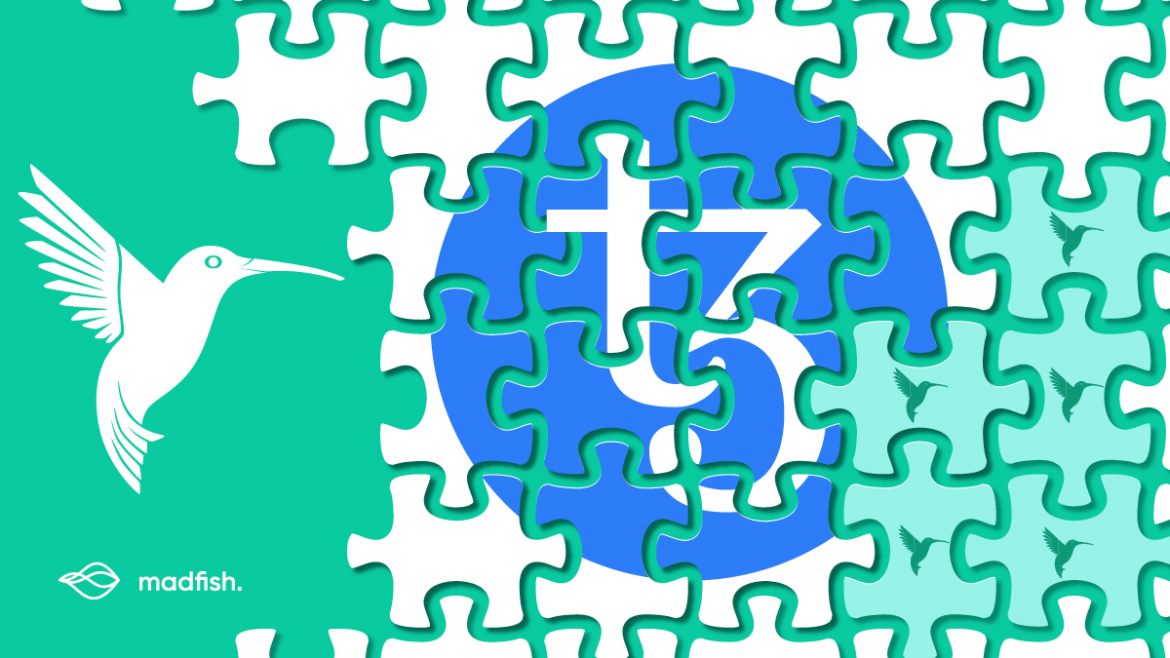A cryptocurrency can either be volatile or stable, depending on the price fluctuation dynamic and whether or not it is pegged to an external reference. The mechanism behind creating stablecoins is different: it can be fiat-backed (in most cases, pegged to the US dollar), supported by other cryptocurrencies (for example, a DAI token that is generated by 150% ETH overcollateralization), or algorithmic (where the supply and demand dynamic determines the need to either add extra tokens or burn some of the existing supply). You can find more information about these creation methods in our recent post.
The Kolibri stablecoin (launched on January 7, 2021) is one of the most popular DeFi projects on the Tezos blockchain to date. In this post, we’ll provide you with all the relevant information about this coin.
How Kolibri works
Kolibri’s internal design supplements the economic mechanism of creating DAI with algorithm-based procedures for minting and burning tokens. Essentially, it means that Kolibri relies on a set of smart contracts and collateral to withstand price fluctuations. Each new deposit creates an oven, or Collateralized Debt Position (CDP), that allows four actions to happen:
- Deposit
- Withdraw
- Borrow
- Repay
The cryptocurrencies used in the project are XTZ (native to the Tezos blockchain) and kUSD (a soft-pegged USD-stable valued minted asset). The collateralization ratio for the Tezos stablecoin is calculated in the following way:
Collateralization Ratio = ((XTZ in Oven * Price of XTZ/USD) / (Borrowed kUSD + Stability Fees)) * 100 In this formula, the stability fees are the interest amount that users see as APY. For this Tezos stablecoin, it’s the percentage fee charged on borrowed kUSD and is calculated every minute. This governance mechanism is needed to control the intensity with which kUSD is borrowed and to maintain the peg. The stability fee serves as both a “liquidator of the last resort” (as a stability fund) and a development fund for elaborating the project.
The technical side of the Kolibri stablecoin

Kolibri is an open-source project that uses XTZ as collateral and creates kUSD stablecoins by implementing the FA1.2 Standard. Within the system, the set of smart contracts manages and checks all the transitions that happen along the way. In particular, proxy contracts allow for upgradability, while factory contracts maintain a sufficient degree of security and openness. You can find further details on the reliability of these smart contracts in the official security audit of the project.
Liquidation
The system utilizes compound interest accrual to secure the network from vulnerabilities and to establish the stability fund. At the same time, users themselves are encouraged to track and liquidate undercollateralized ovens, given that they have sufficient kUSD to repay the loans. This leads to an increase in competition within the network and ultimately an increase in the stablecoin value.
Governance
As an extra layer of security, the community-led governance mechanism allows the introduction of important features without direct intervention in the system’s personal ovens. In May, the project announced the launch of the governance token $kDAO that allows users to make proposals and change internal protocol parameters.
Oracle
For proper collateralization, the Kolibri project relies on price data taken from the Harbinger Price Feed. The oracle eliminates any potential price manipulations that may take place in the projects that adopt the Automated Market Makers (AMM) model. About oracles in DeFi you can learn from our review:
Liquidity pool
The Kolibri Liquidity Pool is a shared pool that facilitates liquidating under-collateralized ovens in the network. The mechanism involves issuing QLkUSD tokens in exchange for depositing kUSD tokens in the pool. With QLkUSD tokens, you can claim extra kUSD from liquidating ovens. After liquidation, the pool trades the XTZ that are left over for kUSD on QuipuSwap and distributes them proportionally among all holders of QLkUSD tokens.
5 main risks Kolibri creators mitigate
As an algorithmic stablecoin, Kolibri relies heavily on smart contracts. This peculiarity is its main strength, although it also possesses several weaknesses. Below are 5 key vulnerabilities of the Kolibri project:
- Protocol-based: The Tezos blockchain develops at a fast pace, and the project founders recognize the possible difficulties the new features may bring. Among others, Kolibri creators keep in touch with Nomadic Labs’ protocol developers to keep the essential parts of the project safe.
- Economic: The overcollateralization ratio is currently 200% — but the collected stability fund is not yet sufficient. Until it is, the risk of a sudden fall of the collateral behind kUSD is critical.
- Liquidation: In Kolibri’s case, liquidation occurs during sudden undercollateralization and means that users keep their kUSD while the underlying XTZ are used to close the loan difference. The VWAP price feed from Harbinger Oracle is used to mitigate this risk. In practice, it reduces the possible speed of a flash crash of the price to a minimum of 6 minutes.
- Software-connected: Bugs are typical for any software, and frequent tests and security reviews are performed by the team and outsourced from third parties to eliminate potential problems.
- Hacks: Hacks are common in DeFi, and the Kolibri stablecoin also faces this risk. The project creators recognize the threat of malicious attacks and have already conducted a security audit (performed by Least Authority on February 17, 2021).
How to start using Kolibri
- On Kolibri’s page, you must connect your Temple Wallet and make sure that you have some XTZ in there. Check out our guide on how to start using the Temple Wallet for reference.
- Pick an oven by pressing the “Create new Oven” button. The system will ask you to choose a baker or pick a preferred one.
- Click “Deposit” and put some XTZ in as collateral. Note the 200% overcollateralization ratio: 2 XTZ will let you borrow 1 kUSD.
- Generate the allowed amount of kUSD by clicking “Borrow kUSD” on the new oven.
- To prevent under-collateralization, you should ensure to deposit sufficient XTZ and to repay kUSD in a timely manner. For further details, please check out our explanation on liquidation mechanics in our post on how the lending protocol works.
Nowadays, Kolibri is seen as one of the most promising projects on the Tezos blockchain. In recent news, its creators have launched a DAO and initiated a governance token called $kDAO. The Kolibri Liquidity Pool is a recent incentive to create an extra use case for kUSD. We, at MadFish Solutions, support this project with the Temple Wallet connection and the trading of minted kUSD on QuipuSwap.

